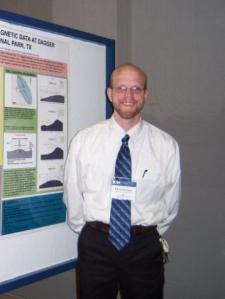Chris P. answered • 09/24/20
Physics Graduate, Certified Teacher, Experienced in Math and Science
Acceleration of the box down the roof must be found first. The only forces acting on the box once it leaves the first roofer (the one who pushes it) are the following:
Fg: Force of Gravity
Fn: Normal Force
Ffr: Friction
The force of gravity is the only force that does not line up with the surface of the ramp or is perpendicular to it and therefore must be broken up into a component that is parallel to the surface, Fgparallel and a component that is perpendicular to the surface of the ramp, Fgperpendicular.
The components of Fg are as follows:
Fgparallel = mgsinθ
Fgperpendicular = mgcosθ
Because the object is sliding down the ramp and friction is working against it, we can write Newton's second law along the surface of the ramp as the following:
Fnet = ma
mgsinθ - Ffr = ma
Note: Friction depends on the normal force according to the following relationship:
Ffr = μFn
Fn = mgcosθ (Because it cancels with the perpendicular component of gravity)
Therefore, Ffr becomes:
Ffr = μmgcosθ
Our Newton's second law expression can be further refined with this relationship to the following:
mgsinθ - μmgcosθ = ma
Solve this expression for acceleration and we get the following:
a = g(sinθ -μcosθ)
Plug numbers in and we get:
a = 9.8(sin(23.4 - 0.7(cos(23.4)) = -2.39 m/s2
From there we can list variables and use kinematics:
Vf = 0 m/s (We want the object to stop at the second person)
Vo = ? (This is what we need)
a = -2.39 m/s2 (Found using Fnet = ma in the above work)
d = 3.8 m (displacement of the object)
t = ? (Not given, also not needed)
Use the equation:
Vf2 = Vo2 + 2ad
Solve for Vo:
Vo = +/- sqrt(Vf2 - 2ad) = + sqrt(02-2(-2.39)(3.8)) = 4.27 m/s
Therefore,
The velocity that the box must be slid down the roof is 4.27 m/s. Due to friction, the box will stop when reaching the second roofer.
I hope this was helpful!





